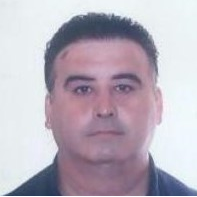New Technologies for Observation and Assessment of Coastal Zones
A special issue of Applied Sciences (ISSN 2076-3417). This special issue belongs to the section "Marine Science and Engineering".
Deadline for manuscript submissions: closed (20 April 2024) | Viewed by 1085
Special Issue Editors
Interests: aquaculture; environmental monitoring; precision agriculture; water quality; wireless sensor networks; chemical sensors; physical sensors; pollution monitoring
Special Issues, Collections and Topics in MDPI journals
Interests: network protocols; network algorithms; network security; Multimedia; WSN; IoT
Special Issues, Collections and Topics in MDPI journals
Special Issue Information
Dear Colleagues,
The coastal zone is a very important area for human beings since several economic activities are concentrated on it, and for biodiversity due to the wide range and variability of ecosystems such as coral reefs, mangroves, seagrass meadows, kelp forests, intertidal zones, coastal dunes, estuaries, wetlands, salt marches, and others. Although the coastal zone is not legally well bounded, it includes both on-shore and off-shore regions. The underwater area is a challenge to monitor given the limited usability of remote sensing and the reduced bandwidth of telecommunication technologies. Meanwhile, the considerable variability and high rate of anthropization has turned the inland region into a complex environment.
The scarce monitoring of these regions supposes a lack of data that are sorely necessary for adequate management. Several technologies can be applied, from sensors being part of wireless sensor nodes, Internet of Things, landers, and remote sensing to artificial intelligence for analyzing the generated data in databases or making predictions. Creating indicators based on sensed data might suppose an important advantage in characterizing the areas to generate early warning systems.
In this Special Issue, we aim to exchange knowledge and experiences on any aspect related to the latest technological advances applied in coastal zones, including marine and fluvial water monitoring, ecosystem monitoring, land cover challenges, and fauna tracking, among others. Both original papers and comprehensive surveys are welcomed.
Dr. Lorena Parra
Dr. José Miguel Jiménez Herranz
Guest Editors
Manuscript Submission Information
Manuscripts should be submitted online at www.mdpi.com by registering and logging in to this website. Once you are registered, click here to go to the submission form. Manuscripts can be submitted until the deadline. All submissions that pass pre-check are peer-reviewed. Accepted papers will be published continuously in the journal (as soon as accepted) and will be listed together on the special issue website. Research articles, review articles as well as short communications are invited. For planned papers, a title and short abstract (about 100 words) can be sent to the Editorial Office for announcement on this website.
Submitted manuscripts should not have been published previously, nor be under consideration for publication elsewhere (except conference proceedings papers). All manuscripts are thoroughly refereed through a single-blind peer-review process. A guide for authors and other relevant information for submission of manuscripts is available on the Instructions for Authors page. Applied Sciences is an international peer-reviewed open access semimonthly journal published by MDPI.
Please visit the Instructions for Authors page before submitting a manuscript. The Article Processing Charge (APC) for publication in this open access journal is 2400 CHF (Swiss Francs). Submitted papers should be well formatted and use good English. Authors may use MDPI's English editing service prior to publication or during author revisions.
Keywords
- physical sensors
- chemical sensors
- acoustic sensors
- optical sensors
- magnetic sensors
- remote sensing
- land cover
- fauna tracking
- water monitoring
- ecosystems monitoring
- transmission technology
- underwater communication
- artificial intelligence
- database






